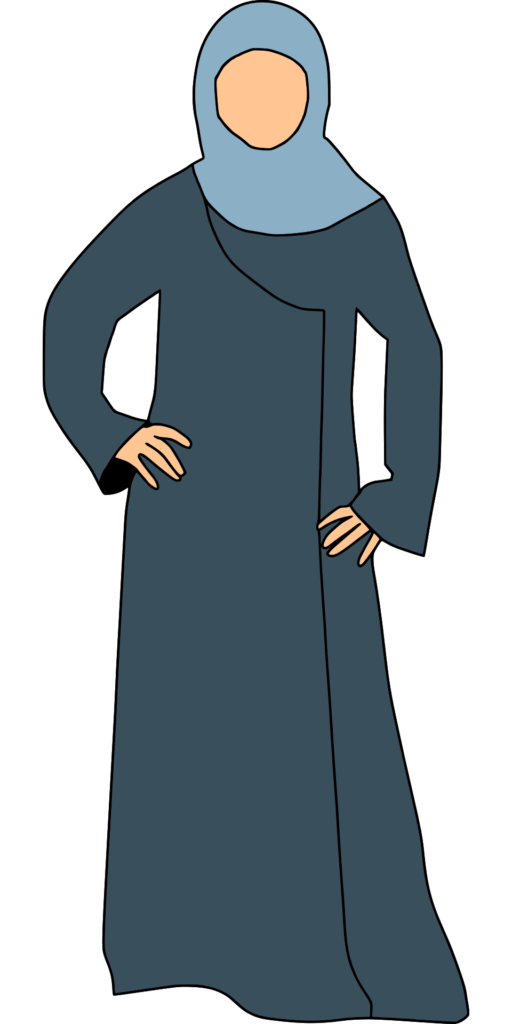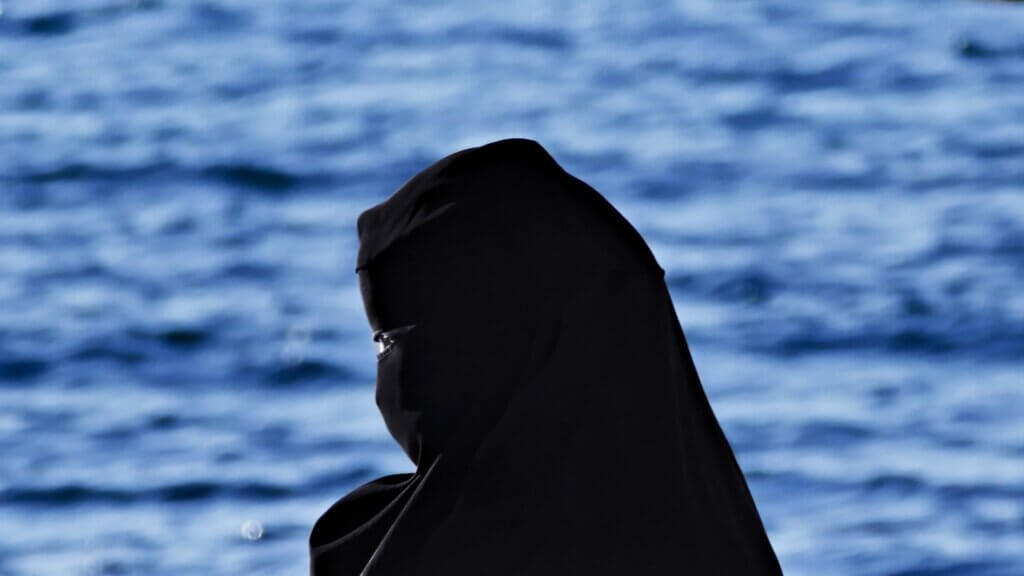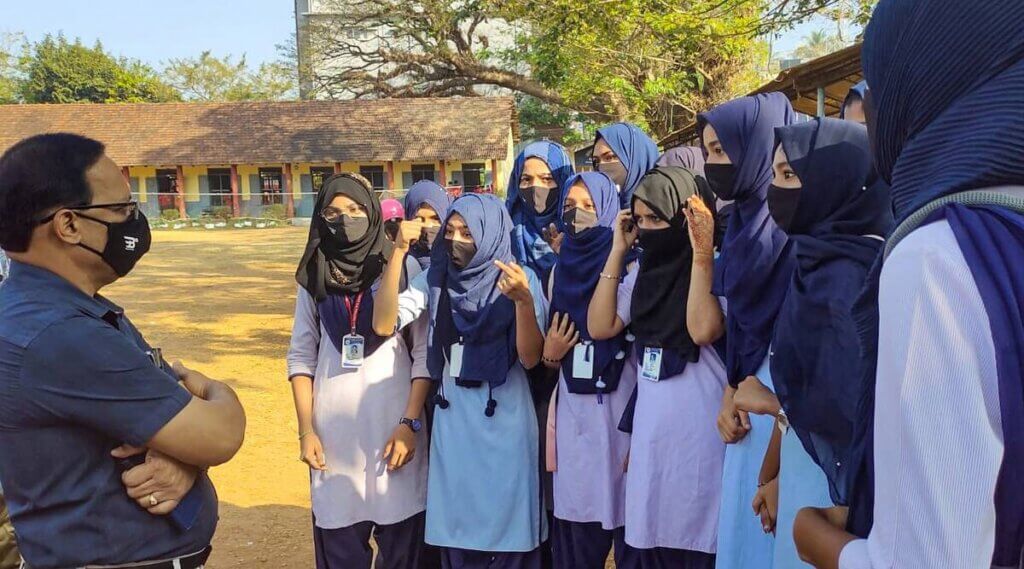HIJAB Understanding Islamic Modesty

Recognize what the hijab is
The term HIJAB is actually the Arabic term for creating a partition or barrier and doesn’t specifically mean a type of head covering. In Islam, the hijab consists of the fundamental behaviors for modesty, as well as how Muslims should dress. These rules apply to both men and women and vary depending on how close the person is to reaching puberty.
- Many people frequently refer to a headscarf of any sort as a hijab, so the meaning is often context-dependent.
- One of the most important purposes of the hijab is to identify the wearer as an adherent of Islam.

Understand basic modesty in Islamic culture.
Muslims are required by the Quran to be modest, especially around those of another gender, and must cover their awrah (what is deemed a private area in Islam). What counts as the awrah is largely dependent on the age and sex of the person in question – for example, babies do not have awrah, and young children only need to cover their private parts.
The awrah for a woman shortly before and after she reaches puberty is from her head to her ankles. Most scholars agree that it’s acceptable to leave your face and hands uncovered, though not everyone agrees on whether you should cover your feet.

Read the Quran verses
To gain a better understanding of the rules of veiling, it’s important to read the Quran verses that address it, with the most frequently cited verses being 24:31 and 33:59.
- “And tell the believing women to reduce [some] of their vision and guard their private parts and not expose their adornment except that which [necessarily] appears thereof and to wrap [a portion of] their headcovers over their chests and not expose their adornment except to their husbands, their fathers, their husbands’ fathers, their sons, their husbands’ sons, their brothers, their brothers’ sons, their sisters’ sons, their women, that which their right hands possess, or those male attendants having no physical desire, or children who are not yet aware of the private aspects of women. And let them not stamp their feet to make known what they conceal of their adornment. And turn to Allah in repentance, all of you, O believers, that you might succeed.” [Quran 24:31]
- This verse is interpreted as the rules for both modesty and for veiling and is the reason why most Muslims consider it a requirement to veil.
- “O Prophet, tell your wives and your daughters and all the women of the believers to bring down over themselves [part] of their outer garments. That is more suitable that they will be known and not abused.” [Quran 33:59]
- This verse, prior to translation, uses the Arabic word jalabib (the plural of jilbab), which translates as “loose outer garments”. This is frequently interpreted to mean that Muslim women should wear loose clothing, rather than anything tight or form-fitting.

Look into ahadith
Hadith, the sayings of the Prophet Muhammed, and other religious figures of his time, often give further insight to parts of Islam that aren’t elaborated on by the Quran. While not many ahadith refer to veiling specifically, there are some out there, including the following:
- It was narrated that Aisha said that the Prophet said, “Allah does not accept the prayer of a woman who has reached puberty unless she wears a veil.” [Sunan Abi Dawud 641; classed as Sahih by Al-Albani]
- It was recorded that Safiya bint Shaiba said that Aisha said, “When [the Verse], “They should draw their veils over their necks and bosoms” was revealed, the women cut their waist sheets at the edges and covered their heads and faces with those torn pieces of cloth.” [Sahih al-Bukhari, Vol. 6, Book 60, Hadith 282]
- Narrated Aisha, “The believing women covered with their veiling sheets used to attend the Fajr prayer [the dawn prayer] with Allah’s Apostle, and after finishing the prayer they would return to their home and nobody could recognize them because of darkness.” [Sahih al-Bukhari 578]

Know when most people begin veiling.
Most Muslim girls are accustomed to wearing the hijab by the time they’ve reached puberty, though there are many views on when is the best time to start. New converts are encouraged to begin veiling as soon as possible, though it’s acceptable to gradually transition into covering instead of all at once.
- Some people believe that all girls should begin veiling by age nine, even if she hasn’t started puberty yet; others think it’s best to wait until signs of puberty appear (such as the developing of underarm or pubic hair, or the onset of periods). If no signs appear, then the girl will be considered an adult by age 15 in lunar years.
- Other people introduce their daughters to wearing the hijab when they start learning their prayers at age seven, or by age 10 when the five-times daily prayer habit may be established.
Be aware of the full religious significance of veiling
The hijab isn’t just your headscarf – it’s how you cover yourself in general. The requirements of the hijab mean that the awrah must be covered. Simply put, the “rules” of wearing the hijab are:
- To not display your appearance (beauty) except what is already apparent (i.e., your face and hands, and possibly your feet).
- To avoid showing hair on your head.
- To refrain from wearing tight clothing, so your figure isn’t exposed.
- Wear your hijab so that it covers your head, neck, and chest (though not all Muslims wear their hijab in this way).
- To avoid unveiling around those who are non-mahram.
- The use of makeup while wearing hijab is debated since the use of makeup can draw attention to your features. Most people agree that light application of makeup is acceptable, though, as long as it wasn’t meant to draw the attention of others.


Know when veiling is not considered a requirement
There are some people that you are not required to wear the hijab around, who are referred to as mahram. While you are still required to dress modestly around these people, it’s fine to reveal your hair, arms, shins, and feet around them. You are considered to be in the presence of mahram when around:
- Men who are considered family, such as your grandfathers, father, uncles, and nephews (however, this does not extend to cousins)
- Your spouse, in-laws, and children (including stepsons and grandchildren)
- Other Muslim women
- Children who are not close to reaching puberty
- Many Muslims have varying viewpoints on whether it’s okay to unveil around a non-Muslim woman; some believe it’s fine because you’re around a woman, but others believe that a non-Muslim woman could describe your appearance to others.

Think about your devotion to Islam
Wearing a hijab will immediately identify you as a Muslim, which can be both positive and negative depending on your location. If you’re not certain how close you feel to your religion or don’t want to identify yourself as a Muslim, you may want to hold off on veiling; if you definitely want people to know you’re Muslim and feel very close to Islam, wearing the hijab or even niqab may seem like a natural step to take.
Look at the laws in your country
- Most bans on head coverings tend to apply to facial veils, like the niqab and the burqa. Bans on all types of headscarves are uncommon, but not unheard of.
- Conversely, some Muslim countries, such as Saudi Arabia and Iran, require that women wear a veil.
- The consensus amongst Muslim scholars is that wearing the hijab after puberty is mandatory under Islamic law (Shariah). However, most non-Muslim countries do not legally mandate the hijab.

Karnataka Govt invokes state law to back hijab ban: ‘Don’t wear clothes that disturb law & order’
In a directive validating decisions of state education institutions prohibiting Muslim girl students from wearing the hijab (headscarf), the Karnataka government said Saturday that “clothes which disturb equality, integrity and public law and order should not be worn”.
The ban on wearing the hijab to classrooms, according to the state government, is not a violation of the fundamental right to religious freedom guaranteed by the Constitution.

